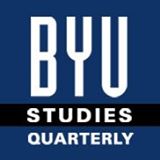BYU Studies

Keywords
BYU Studies, Nephi, Chiasmus
Abstract
In 1967, John W. Welch was serving as a missionary in Germany and noticed a scholar’s explanation of chiasmus as a rhetorical structure that recurs in various parts of the Bible. While the penchant for parallelism that characterized Old Testament writers was widely recognized by that time, the discovery that reverse parallelism was also commonly used by New Testament writers was relatively recent and not yet widely accepted. Welch was no ordinary missionary in terms of his scholarly and scriptural preparation, and he immediately saw the possibility that Nephi and his successors may have been familiar with that rhetorical pattern and may have used it in the writings that we know as the Book of Mormon. He went to work immediately and found numerous clear and impressive examples of chiastic structures in the Book of Mormon text. These discoveries fueled Welch’s 1970 BYU master’s thesis and a long list of subsequent publications that presented additional discoveries and further refinements in his understanding of the phenomenon, addressed both to Book of Mormon readers and to Bible scholars generally.1
Recommended Citation
Reynolds, Noel B.
(2020)
"Chiastic Structuring of Large Texts: 2 Nephi as a Case Study,"
BYU Studies: Vol. 59:
Iss.
5, Article 10.
Available at:
https://scholarsarchive.byu.edu/byusq/vol59/iss5/10
